
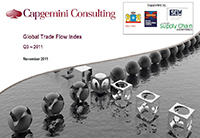 |
Steering
Team: Roy Lenders, Capgemini Consulting Netherlands Prepared
and edited by: |
Executive Summary: Global Trade Flow Index - Q3 2011
|
-
Weak US economy, debt crisis in the Euro zone
and worries about inflation coupled with tighter
monetary policy in Asia have clouded the outlook
for global economy in Q3 2011
- Weakening flows
of goods and services reflected in reduction of
global trade by 1.3%, on QoQ basis in Q3 2011
- Euro zone
debt crisis and an appreciating Euro constrained
the exports from European nations, as total trade
reduced by 2% in Q3 2011, on QoQ basis
- US recovery slowed
down significantly in Q3 2011 due to its financial
turmoil; and US dollar is expected to weaken further
especially against growing market currencies,
impacting its trade volumes
- Japan’s economic
growth improved in Q3 2011 as reconstruction spending
and improved exports provided a boost to overall
growth
- Amongst BRIC nations,
the outlook for Indian and Chinese economies remains
positive, driven by heavy investments and exports
Major economies saw their trade dwindle in the third quarter of 2011, with growth falling down to sub-zero levels
Key developments
-
Global trade growth decelerated further as trade
volumes dropped by 1.3% QoQ, to touch 2,106 billion
USD in Q3 2011
- The deceleration in import and export growth
affected all the G7 nations and the emerging markets,
except China and India
- Euro zone experienced a drop in their total
trade by 2% QoQ in Q3 2011, as growth of exports
was constrained by an appreciating euro
- Due to current financial turmoil, US dollar
is expected to weaken further especially against
growing market currencies, impacting its trade
volumes, with total trade reducing by 2% QoQ in
Q3 2011
- India was the only country to see a sharp pickup
in export growth, from -4.5% in Q2 2011 to 1.2%
in Q3 2011, led by demand for cars, petroleum
products and precious stones
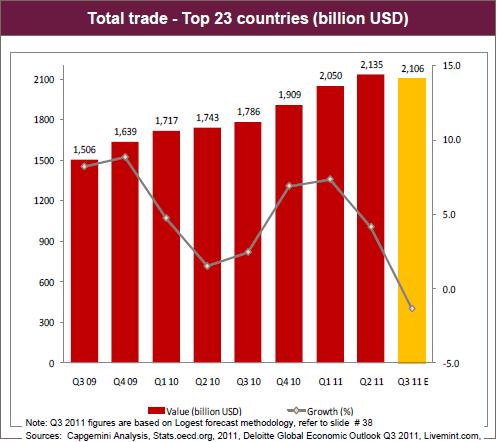
Index
US slipped to second position with China emerging as the leading economy in the third quarter of 2011
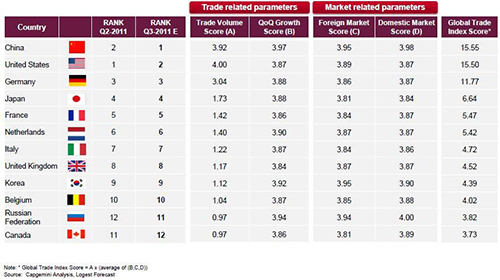
Indian economy performed well in Q3 2011 moving one rank up, backed by strong domestic demand and improving exports (2/2)
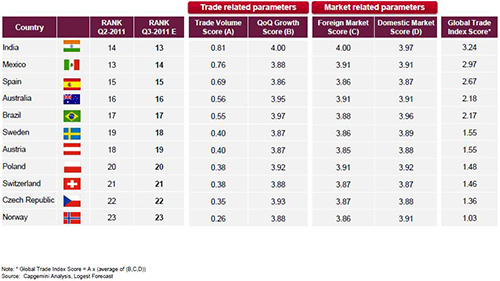
While rising commodity prices and weakening dollar impeded US’s growth, reconstruction spending and resumption of exports helped Japan to grow in Q3 2011
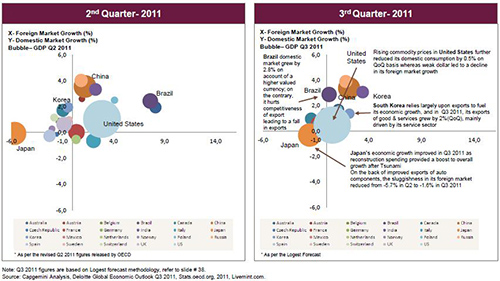
While local economies are still growing, global trade is declining – are we seeing the early impact of protectionism and a trend back to local-for-local manufacturing?
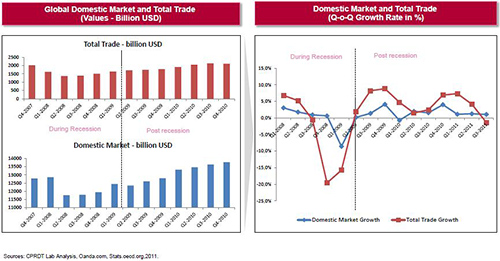
Preview Window for Q4’11
World trade is expected to grow in Q4 2011 although the risks of sovereign debt crisis in Europe still remains
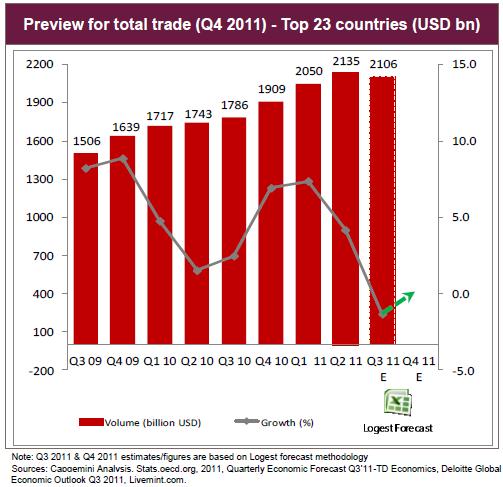
Key Risks
- Inflation (high food prices and volatile commodity markets) is a key risk for both emerging and developed markets
- Ongoing US fiscal imbalances also run the risk of creating instability in financial markets
- Geopolitical instability and sovereign debt crisis in Euro zone could be the key risks to overall outlook of the global business environment
- As growth slows in most of the leading economies and investor confidence weakens, there is a risk for world economy to step back into ‘‘recession zone”
Highlights from some of the major institutes for the global economic outlook for the remainder of 2011 and for 2012
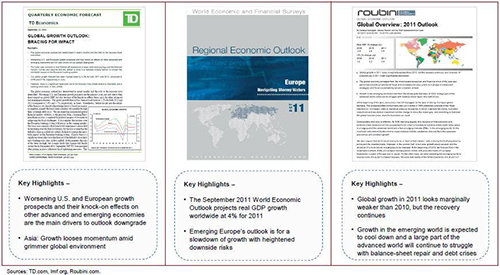
Appendix
Country Profiles
China
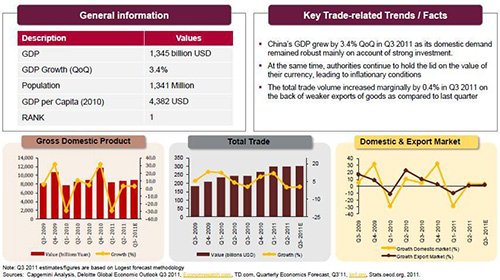
United States
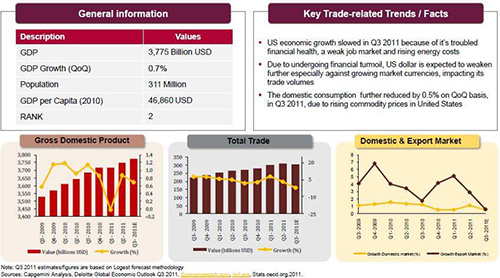
Germany
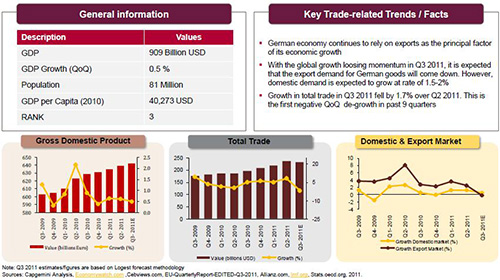
Japan
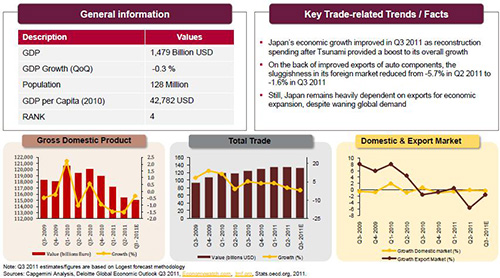
France
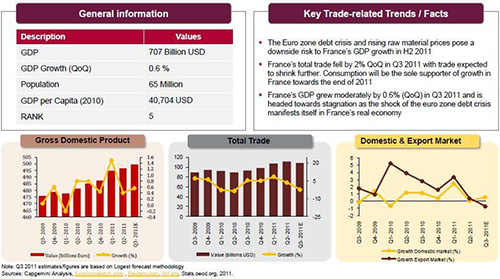
The Netherlands
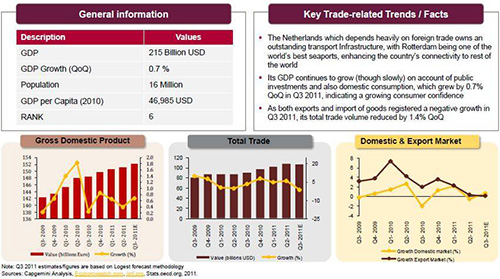
Italy
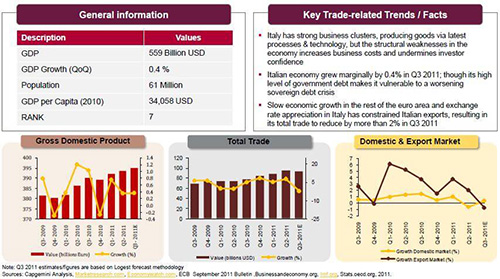
United Kingdom
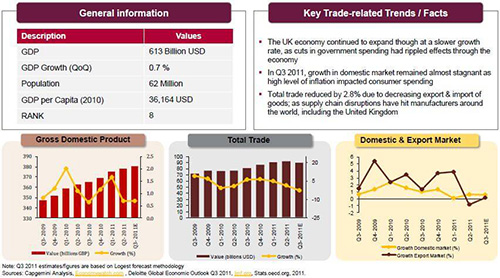
Korea
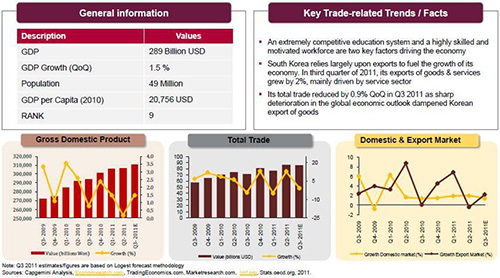
Belgium
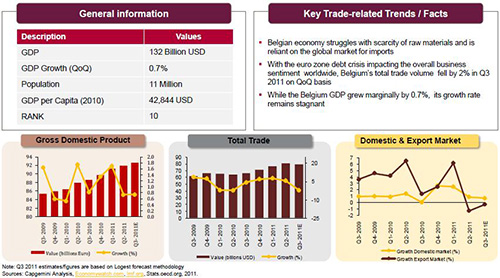
Russian Federation
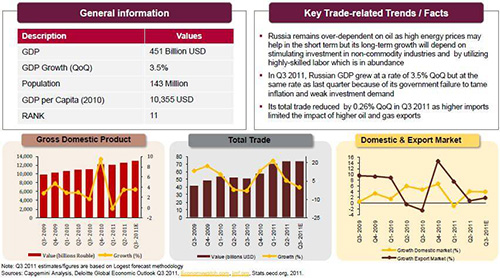
Canada
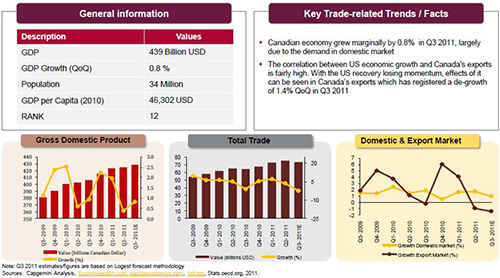
India
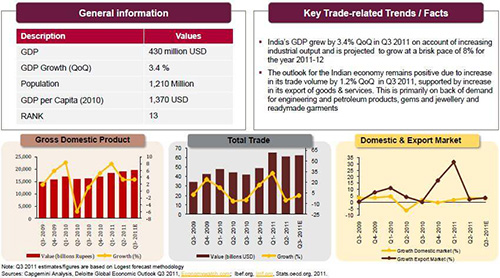
Mexico
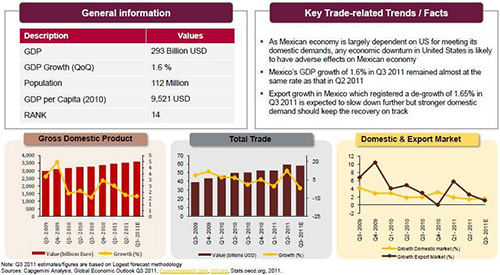
Spain
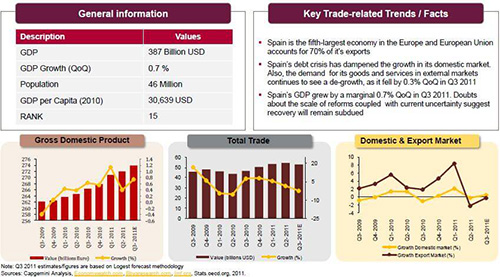
Australia
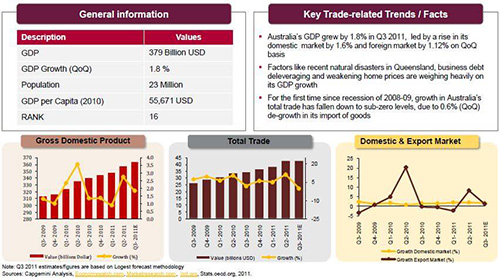
Brazil
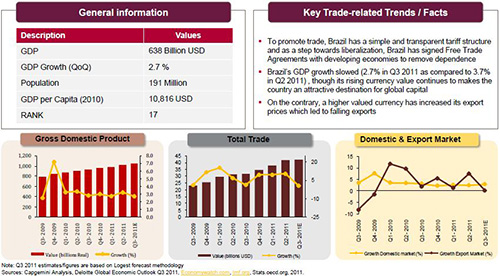
Sweden
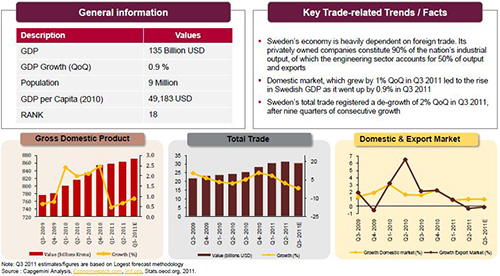
Austria
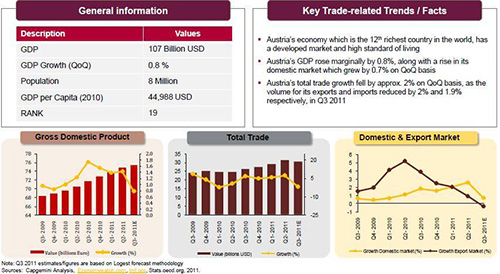
Poland
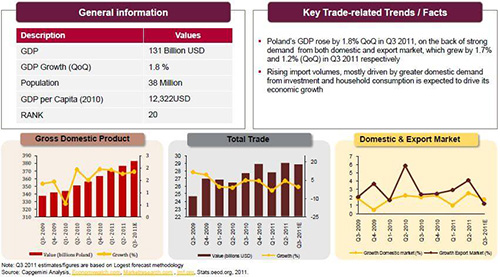
Switzerland
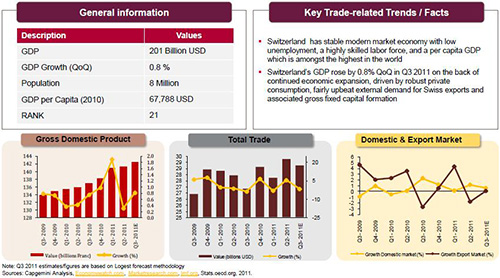
Czech Republic
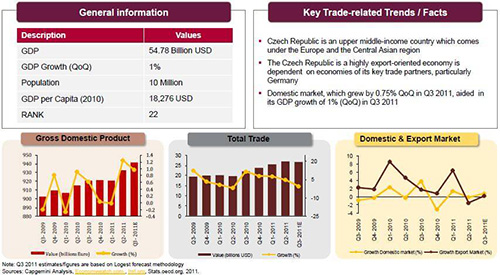
Norway
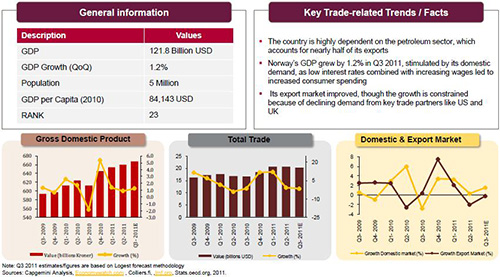
Methodology & Base Data Files
Methodology and Data Sheets
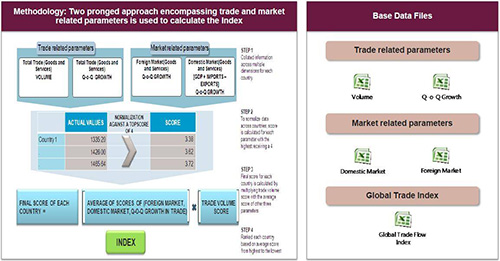
Forecasting Methodology
While predicting the Global trade index, we follow the following steps as mentioned below:
a. LOGEST Calculation:
a. Apply LOGEST Formula (=Logest (Historical Data
Range)-1) to the historical data of trade, GDP,
Domestic and foreign market, until the latest
available quarter
b. From the derived LOGEST value, predict the
next quarter data by multiplying it with the previous
quarter and adding the factor into the previous
quarter data
b. Adjustment Factor Calculation:
a. Calculate the variance of prediction against
the actual for last 4 quarters and calculate the
average variance
b.Multiply the average variance % with the predicted
figures to get the adjusted forecasting
c. Finally, predict the Global trade index based on the adjusted figures

Comparison of ‘Forecasted and Actual values’

•
Forecasted number : This number is arrived by
using LOGEST Forecast Methodology, basis numbers
available for previous quarters
• Initial numbers - Data for current quarter:
These are the actual values available on OECD’s
website. It comprises estimated number for some
of the countries (estimates are either provided
by OECD or some estimates are made by our team
in India basis analyst report/ news articles)
• Revised number : Updated actual numbers
available on OECD’s website. OECD’s
website is regularly updated by actual numbers
made available from each individual country (incorporating
any seasonal adjusted changes, if any)
Variance between Actual vs. Predicted values as per LOGEST method
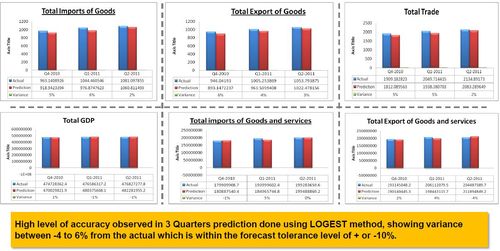
|

